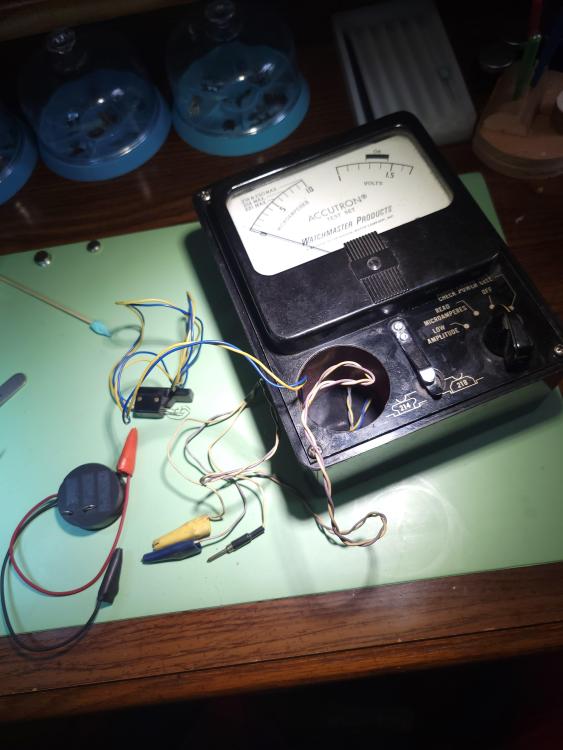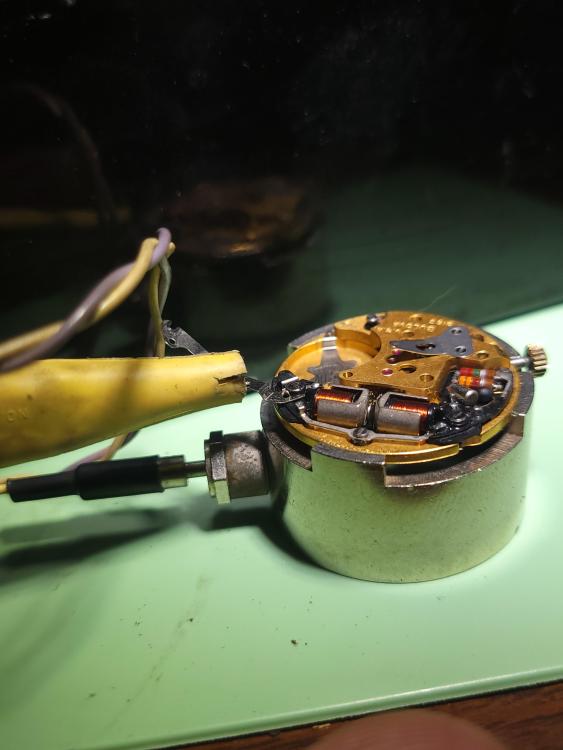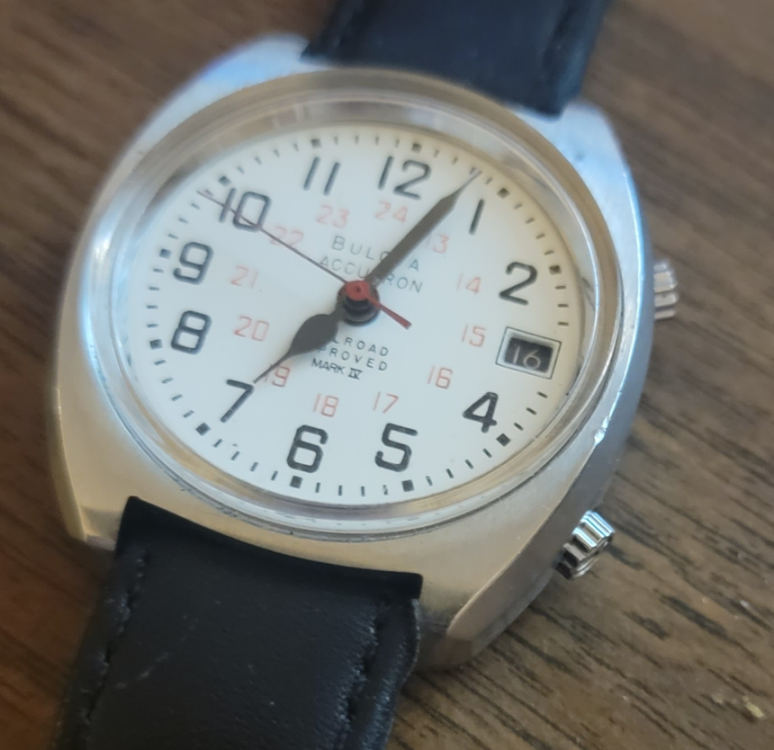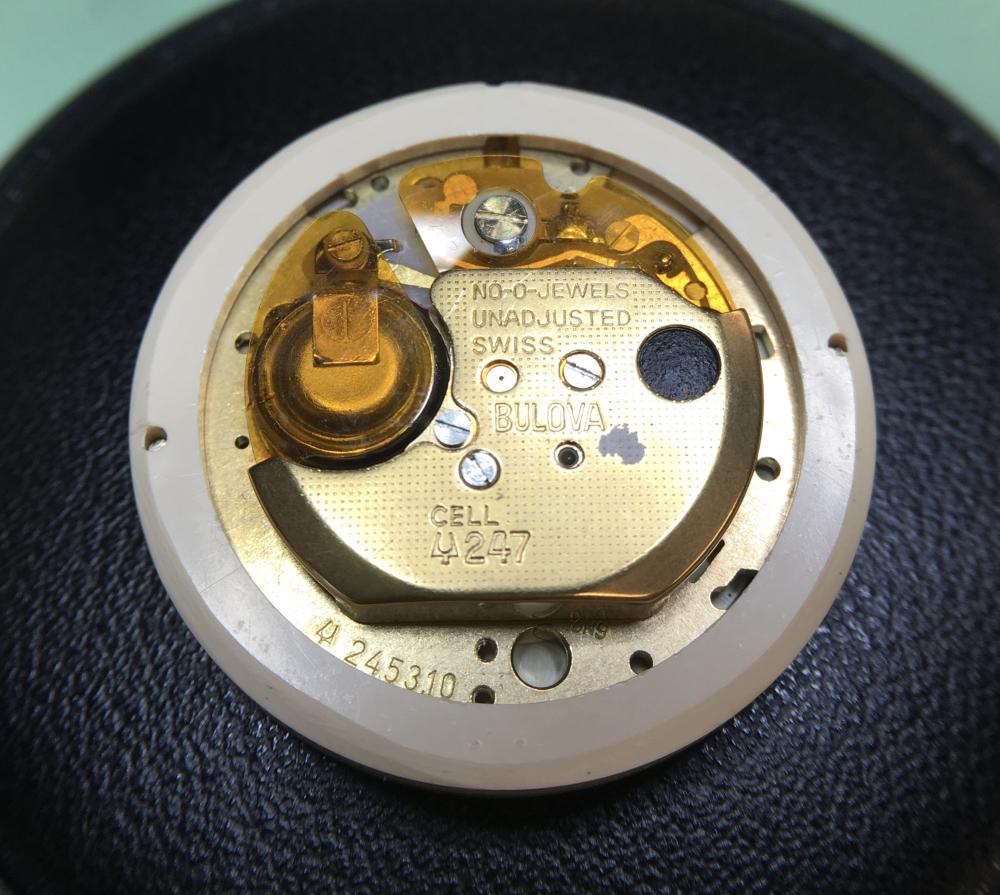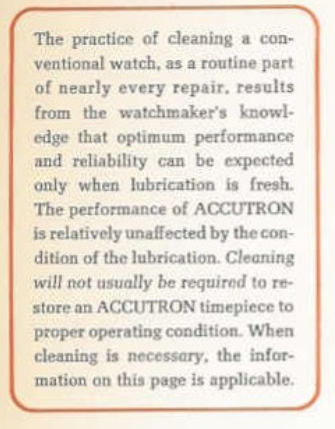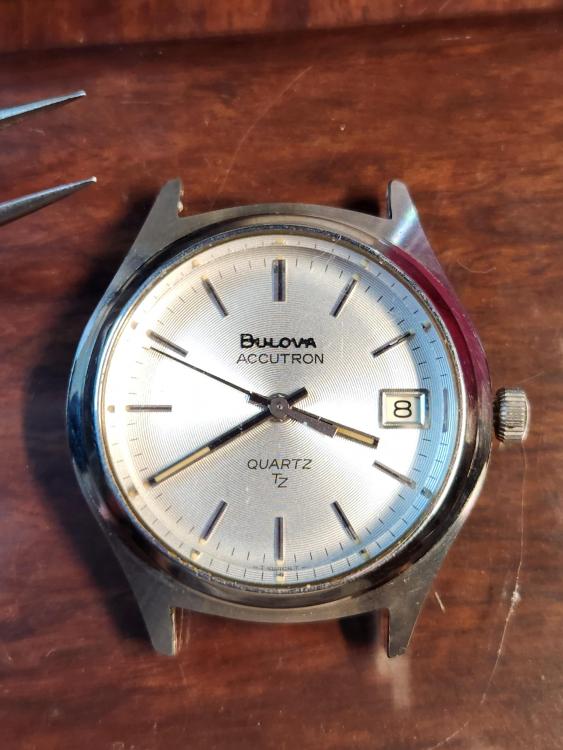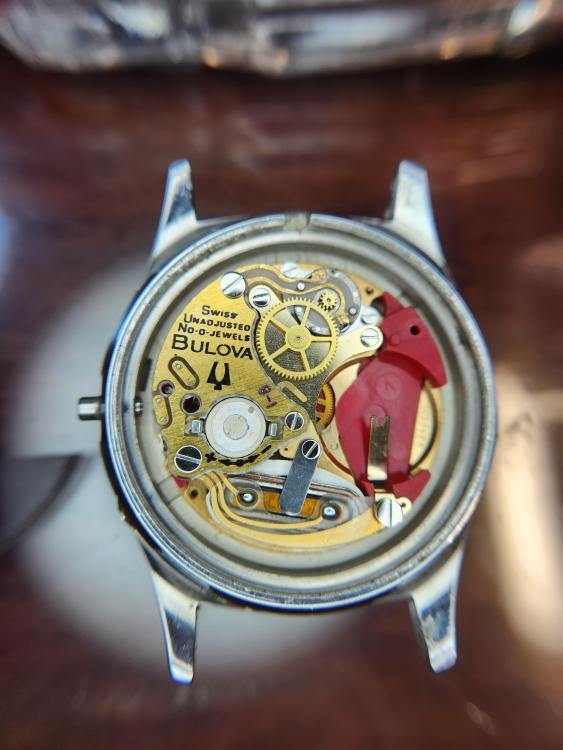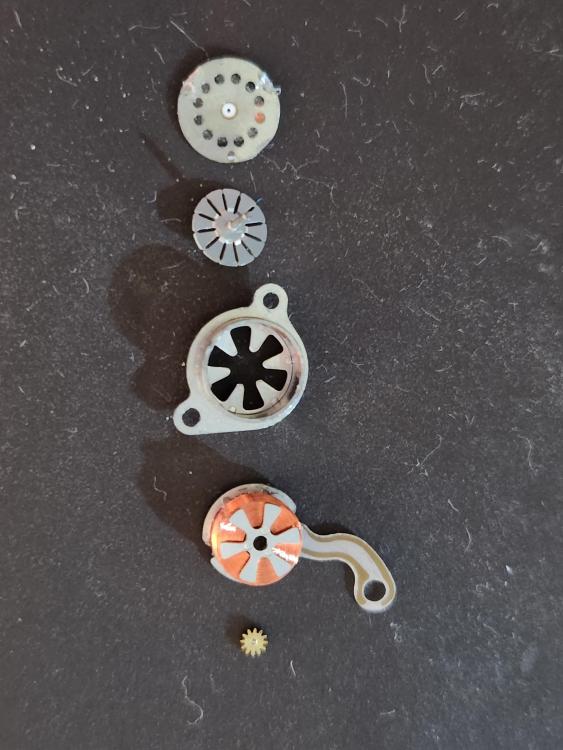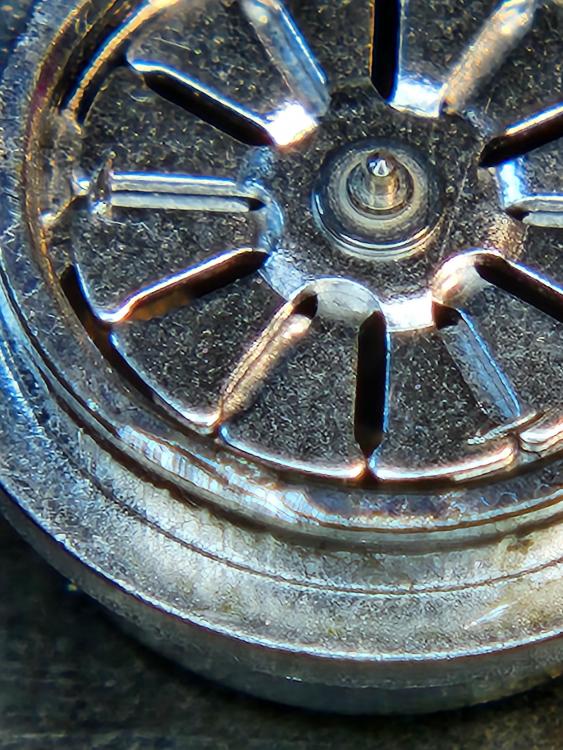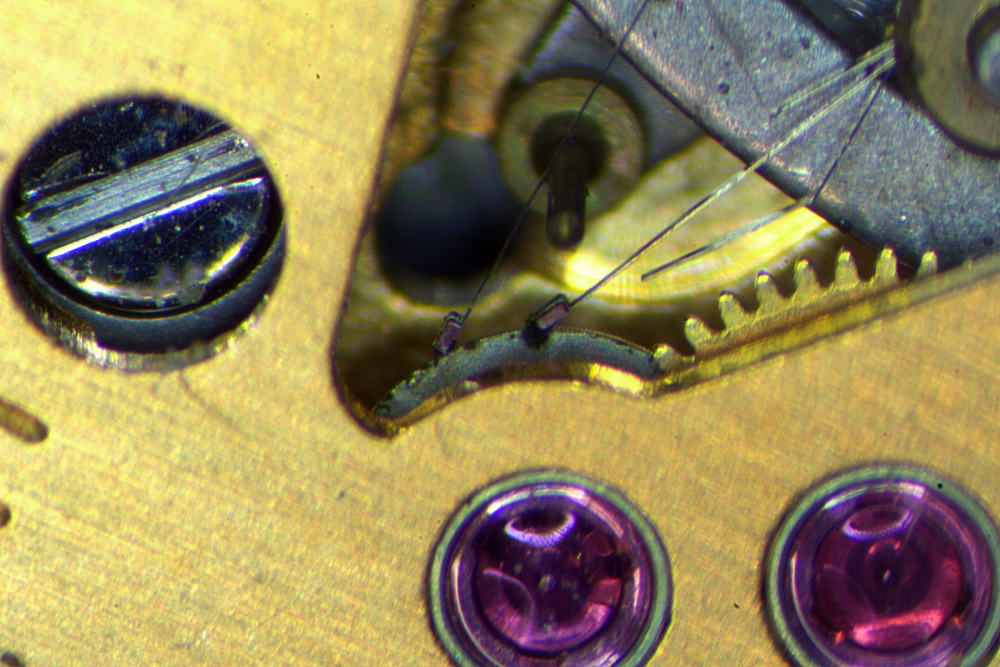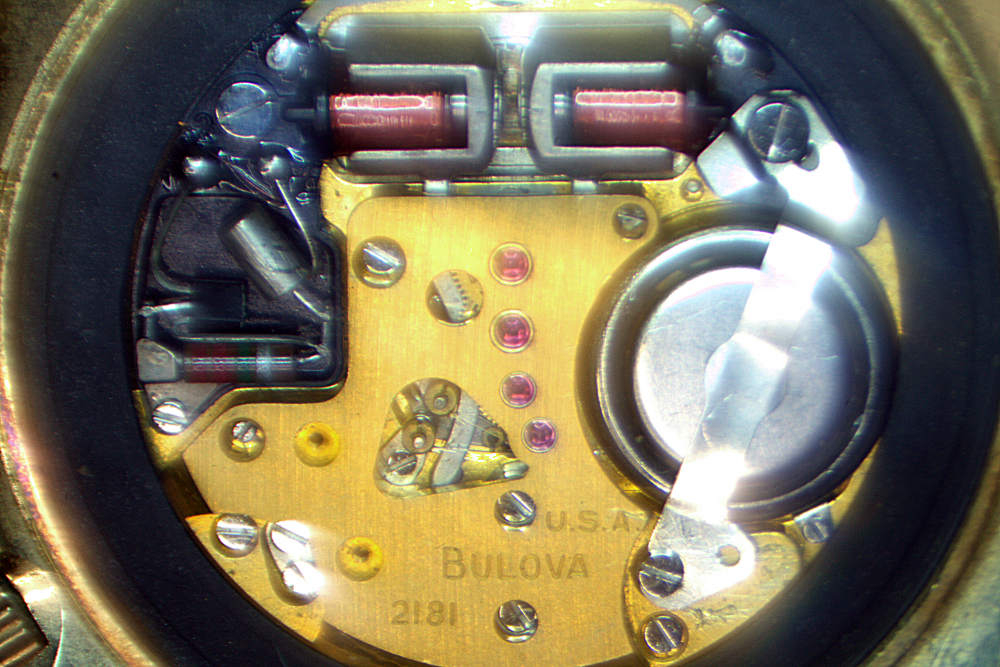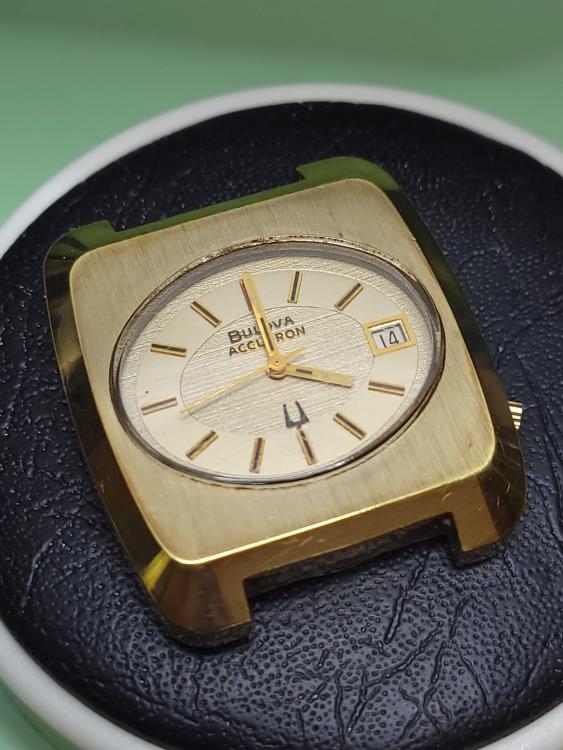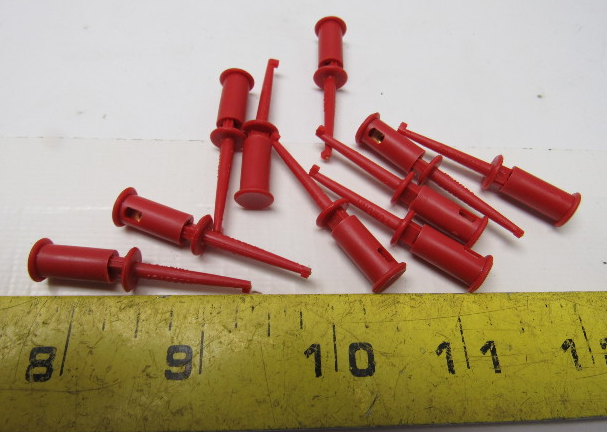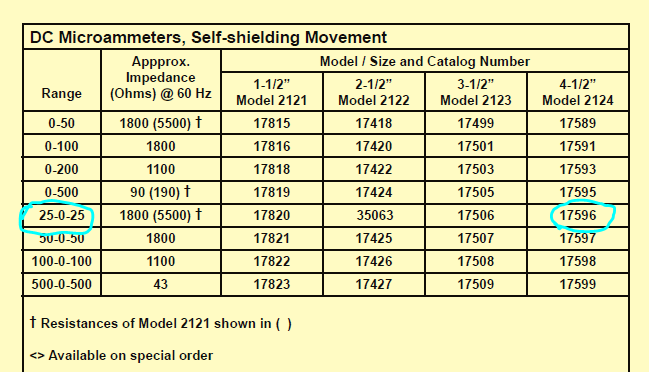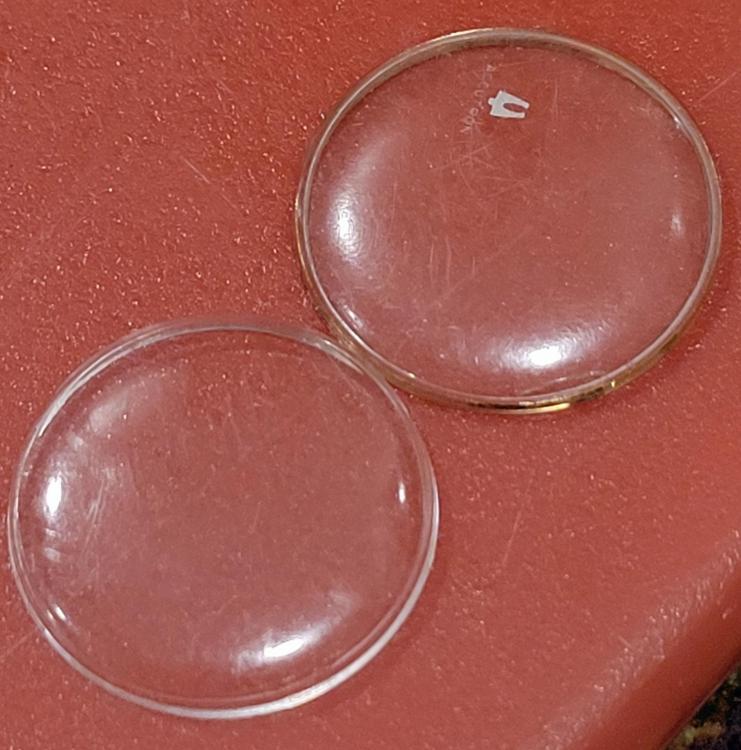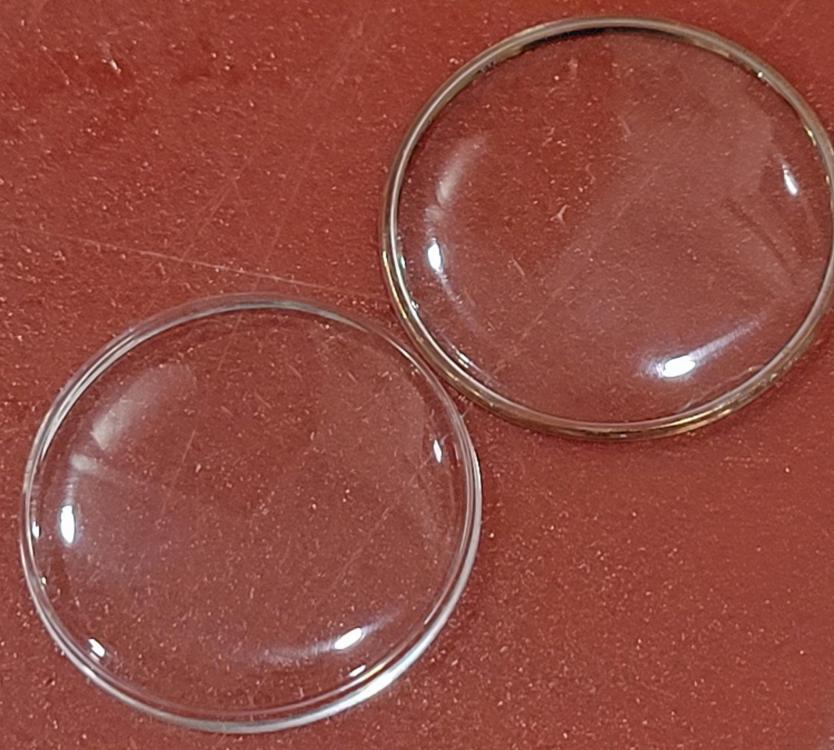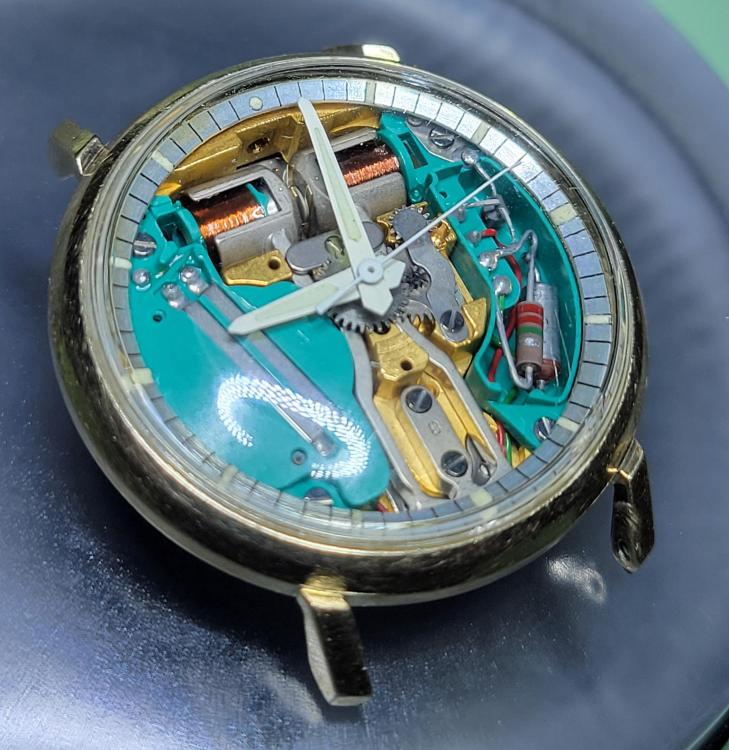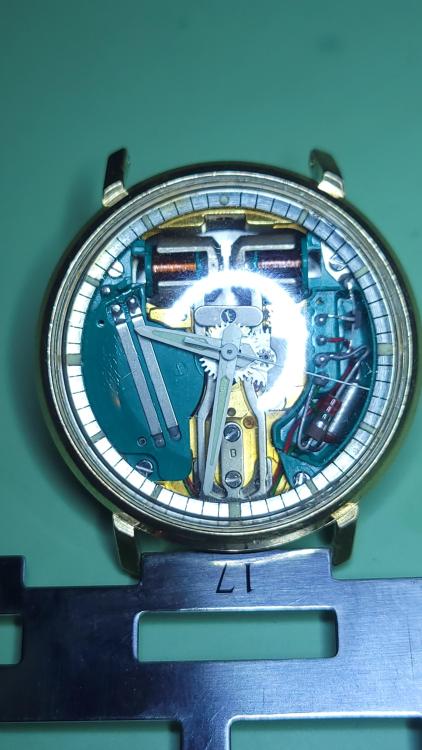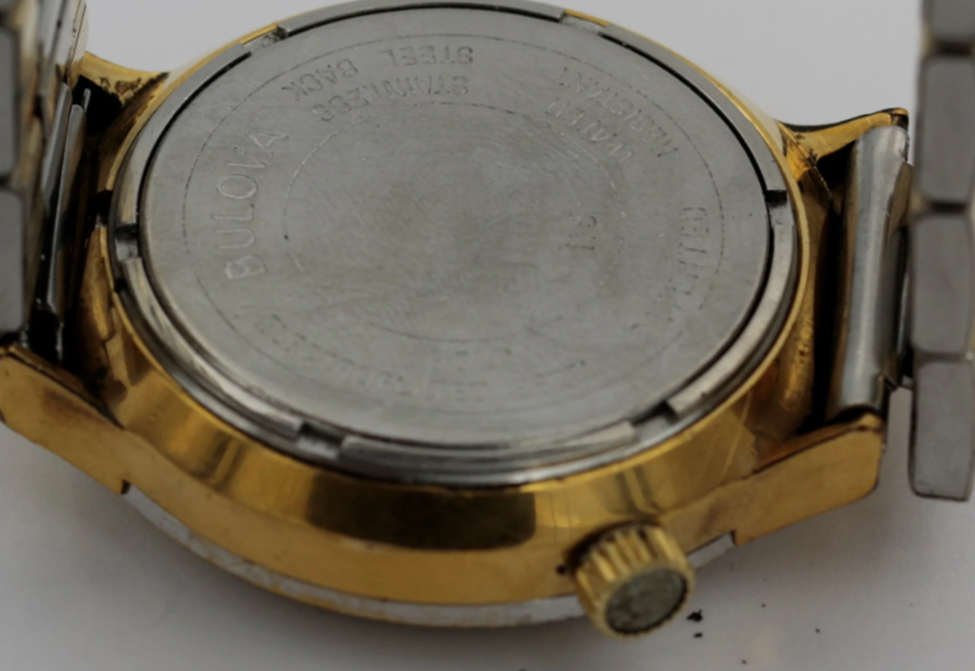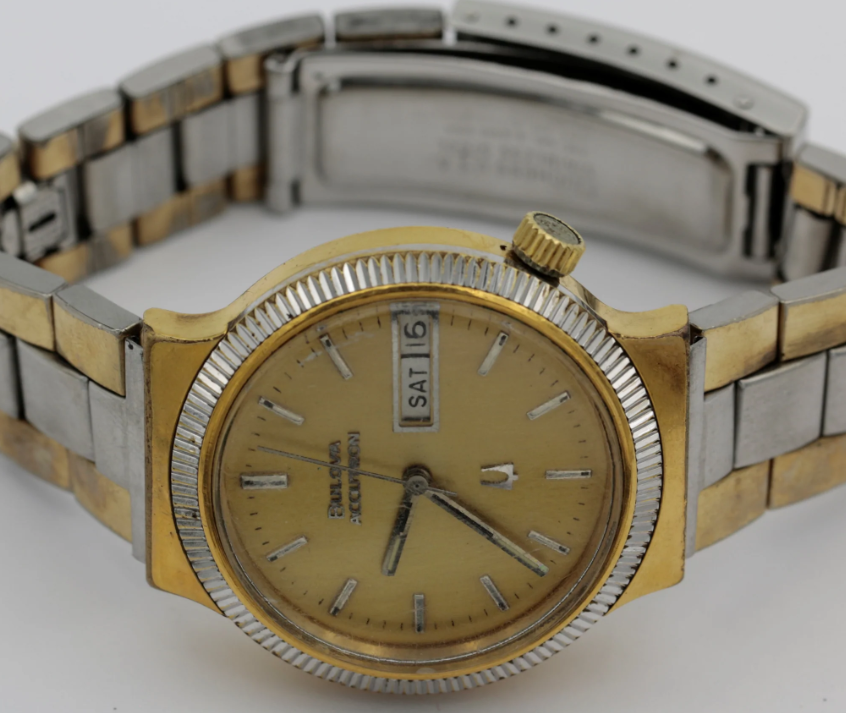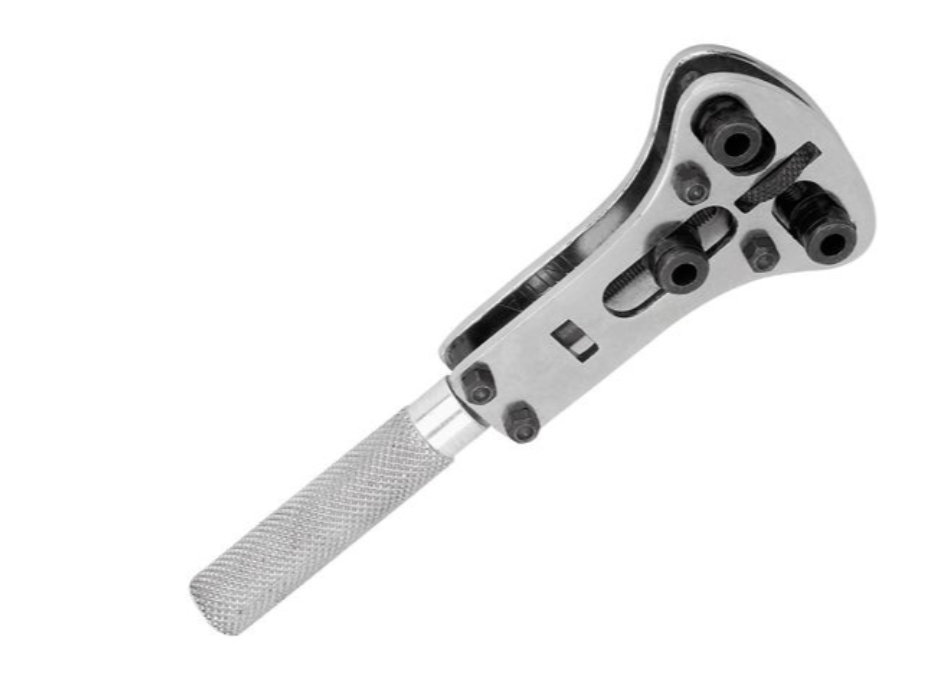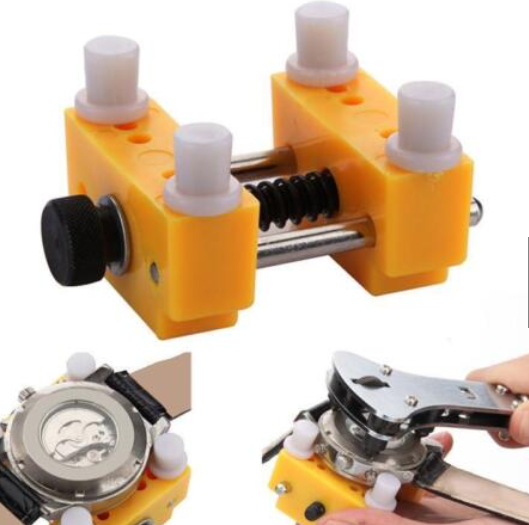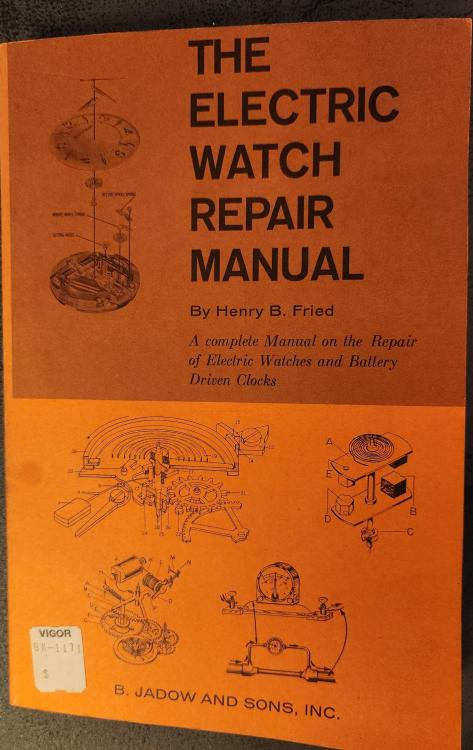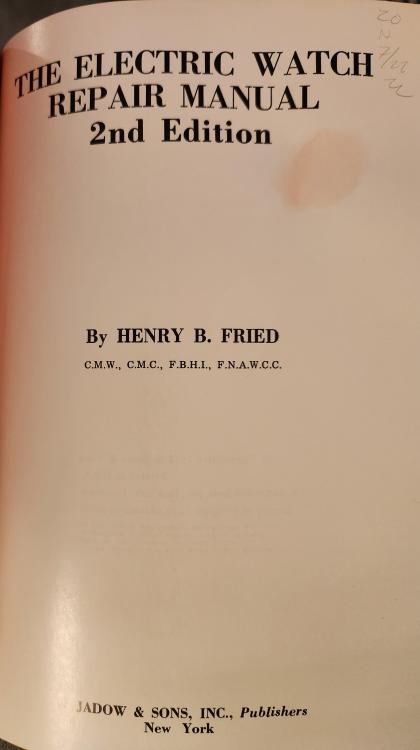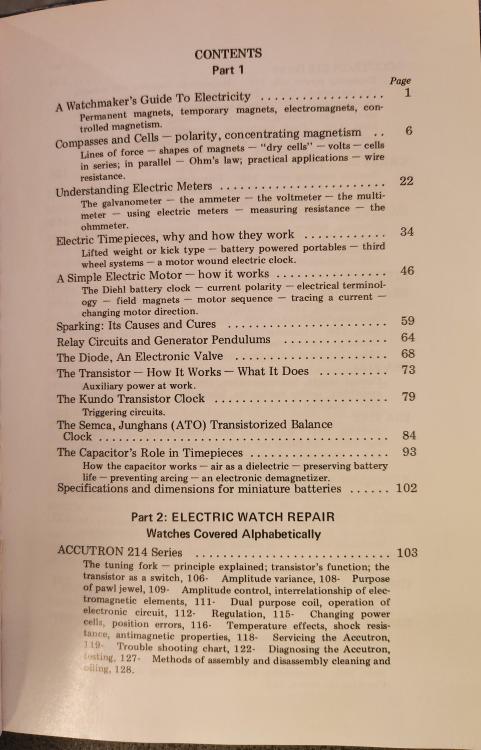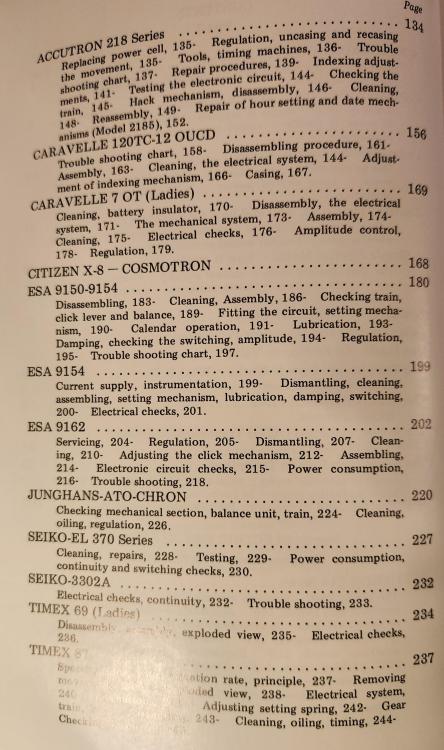Search the Community
Showing results for 'accutron' in topics.
-
I finally feel like I have the confidence, tools, and fine motor control to tackle these tuning fork movements. I've got my 700 test meter here (in beautiful shape with the original box, I might add!) and it seems to work as it's supposed to, at least with one of those 1.35v diode batteries in it. I'm planning to phase the watches for silver oxide cell voltage at 1.65v, so what I'd like to do is use my low voltage power supply to supply the test meter, and so I don't have to keep buying cells. I feel like I saw a thread where someone made a dummy 343/344 cell with power leads on it. Anyone have pictures or a link to that?
-
Any chance someone has technical information on this Bulova 2453.10 conversion? It replaced the 218 that was originally in a 1965 Accutron. If no one has a technical manual (I checked the internet for it, Cousins, etc. with no luck), does anyone know the seconds hand size? I'm replacing the hands with something closer to the original and was able to measure the hour and minute (1.2 and .7 respectively) but can't get an accurate measurement of the seconds hand. The original seconds on the 218 is .18mm and I think the conversion is smaller, but I'm not sure. Here is a photo of the conversion: Thanks!
-
I suppose if you like the other PDF may be of like this one. it's not a complete PDF it only has 214 and 218 stuff. Bulova had parts kits a box with a large card that when in the lid and all the envelopes corresponding to the parts and I think they would add empty envelopes. So if you were servicing these at one time it would be smart to have these although I'm pretty sure they were expensive. So somebody kindly scanned them into a nice PDF I had scanned a couple of the cards but this is much nicer it's all in one place. So then were missing all the other watches but typically the majority of the tuning fork of Bulova would be 214 and 218 and the others while popular not as much and I don't think every single other one had a parts kit that was probably at 230 kit and a 221 kit don't think there was a 219 kit may be. Bulova Accutron Parts.pdf
-
I use M56-b (AKA LGN) for pivots (surprise surprise!). It has a lower viscosity than 9020. Of course there is this craziness from the Accutron service manual. I am taking a shine to servicing these things. Each one gets easier. Still a little tricky getting the index and pawl fingers just right. My cleaning methodology is pretty refined now, using the ultrasonic for the clean and an L&R Master to spin dry between each step as well as dry in the last step. Found the right jars for the job and printed a lifter to lift the basket out of the jars.
-
I just got this non-working Bulova Quartz this week. It houses a Bulova 2426.10 movement. When power was applied, the motor just twitches. My Bulova meter showed that the pcb appears to be functioning. A resistance check of the motor was around 640 ohms. When 1.5V was applied directly across the motor contacts, the rotor only twitches. This is something that another member, @PastorChris, experienced a couple of months earlier. I decided to cut open the motor to investigate. The pivot of the pinion was so brittle that it snapped off the moment I pulled on it. The spot weld of the top cover was so weak that my razor blade cut through it with one tap and went straight into the coils, thus cutting it. The lower cover took a bit of bashing to remove it. I discovered a couple of metal filings across the leaves of the magnet. That was probably shorting out the magnetic field and the cause of the twitching. This is a really brilliant design but probably very expensive to produce. I'll be on the lookout for another similar movement.
-
Yes, on an Accutron the power for the train is actually generated at the escapement, so counter-intuitively that tiny delicate index wheel generates a lot of torque by the time you get to the hands. This is why you see Accutrons still running after decades of no oil, but when you get them apart, you see pivots almost completely worn away and such.
-
When I first started being interested in watches, mom passed on her dad's Accutron to me. He died back in 2004 and was a huge part of my life growing up, so this is a treasure to me. So I put it in a drawer and didn't touch it until I felt ready. I bought several other 218 movements to practice on, as well as the Accu-cell 1.35v battery. I've got the Model 700 test kit, the service manual, and watched all of Henry Frystack's videos, so I feel like I'm ready to dive in. Today I thought maybe start with putting a fresh battery in--looks like an old mercury cell is still in there--and see what happens. Then I put it under the microscope and found clouds of gunk on the index wheel and pawls and decided against it. Guess it's time for a cleaning!
-
Bench Testing Seiko 3823 Movement
JohnR725 replied to RickTock's topic in Quartz and Tuning Fork Battery Operated Watches
Yes you're going to have to make a New Year's resolution to get a life and not spend so much time here oh wait, I suppose that means I'd have to make the same silly New Year's resolution of having a life and spending too much time here so just forget about that silly thing everyone has to have a hobby. It's a secret code word you need the secret decoder ring to grasp its meaning. It's a reference to something forbidden at least by a horological Association Which is explained in the paragraphs on the webpage. http://www.pocketwatchrepair.com/catt/pwr-supply.php Here's another example of something similar. Then if you didn't have the Bulova holder for electronics they do make nice small clips that will clip on to the watch itself without a problem. Because that's typically what I do with my power supply just don't have a picture of the clips that I'm using but I see if I find something https://electric-watches.co.uk/accutron-test-meter-mark-3/ Here's what I'm using what I work on electric watches their very nice and tiny and providing you have really lightweight wire that don't pull on anything but basically any of the really tiny microbe grabbing for electronics would work Here's a link to all kinds of places you can buy them from then you do want to buy them into separate colors C keep track your plus and minus so typically that The red and black https://www.pomonaelectronics.com/products/test-clips/micrograbber-test-clip-do-it-yourself-available-ten-colors -
Bulova Accutron 2181 Repair
HectorLooi replied to bobtheterrible's topic in Your Walkthroughs and Techniques
I think all of us who have attempted servicing an Accutron are familiar with this phasing diagram. But all that assumes that the amplitude of the tuning fork is such that the index jewel travels a distance of between 1s and 2.5s over the entire useful voltage range of the battery. But what all the literature out there doesn't explain is how to make the index jewel travel between 1s and 2.5s. All they say is that there are some tuning forks out there that cannot be phased properly. There doesn't seem to be any test equipment out there that is capable of measuring the actual travel of the index jewel. I think it is important to be able measure this travel distance before even attempting to do phasing. It's like the amplitude of a conventional watch. If the amplitude is too low or too high, proper regulation cannot be achieved. I was at my mentor's workshop and we were playing around with his digital microscope and noticed that if the frame capture rate is adjusted, it can actually make the index jewel appear to move in slow motion. And the travel distance can be actually seen. If anyone out there is into high speed photography or stroboscopic photography, I hope this information is useful to you to develop a "timegrapher" for tuning fork watches. PS. I am tagging @LittleWatchShop here. If you are planning on developing an Accutron service centre, please read this. -
Did you notice the specifications for your 25 µA meter? It's a plus or minus meter it's not a 0 to 25 kind of. EBay is still a nice place to get meters if you're patient anticipating someday I might build a new power supply I managed to get a 0 to 20 µA meter who knows where though it is lurking in the house they purchased a while back. The other source of service manuals for Accutron Is it just download the PDF's as the book is basically a copy of the service manual anyway. The link below has all sorts of interesting Bulova stuff with all of the tuning fork service males etc. found basically at the bottom of the page https://www.mybulova.com/vintage-bulova-catalogs
-

1971 Bulova Accutron Spaceview 214
ManSkirtBrew replied to ManSkirtBrew's topic in Your Current Projects and Achievements
While cleaning up the case, I polished out the crystal, then gave it a wipe with a paper towel. And that's how I learned that despite being on the inside of the crystal, the Accutron logo wipes right off with a little soap and water I should have been more careful, but live and learn. I'm not too heartbroken, as the crystal has some pretty bad cracks and deep scratches, and I was planning to replace it anyway. I have to say, I still love the results of a quick polish on the wheel with red rouge. Here's a before and after of two Accutron crystals. This was all of 5 minutes' work. Cleaned up and back together. Unfortunately, the lugs measure 17,mm, while all the straps I have are 18mm. I have a suspicion this watch was treated roughly and the lugs may be bent, but I'm not brave enough to try bending them back. -
This is an interesting thread. I am trying to setup a methodology solely for Accutrons. Since the manual says to use ultrasonic, I have to deviate from my L&R Master cleaning system that I use for mechanical watches. And I just rebuilt another one for my remote location where I will be doing this work...oh well. The last few days I have been working on two "learner" accutrons. My method is to use the L&R Fine (which is all that I have) in a mason jar and then in my ultrasonic (small jewelry type). I run two short cycles, then do a pre rinse in L&R rinse and then a final rinse in same. Then I take the parts out and set them under an incandescent lamp (60 watt) to dry. I also puff off the parts to accelerate evaporation. I treat the pawl and index fingers separately by dunking them in one-dip. My glass cup is too small for the tuning fork, so I just squirt one-dip with a syringe. A kludge for now. I also dip the index wheel in one-dip. This seems to work. I have ordered some petri dishes that are larger and will allow the tuning fork to immerse fully. I know that some suggest putting all of this in the ultrasonic, but I am not ready for that yet. In a perfect world, I would have jars that accommodated my L&R basket. That way, I could put the parts in that and on the last step, I could use my L&R Master to do the drying. I am looking for the appropriate jar. Am I overthinking all of this. Perhaps. But, I have about 50 of these to repair, so it is worth the effort to design a really nice process. On a side note, the two watches I have worked on had crappy black residue and one had the seep second stuck with the black crap. I think it is the molybdenum disulfide that Accutron recommends...dries up resulting in bad things. I will not use the recommended oil, but will instead use MolyKote for those places. I see no reason why not. I am gonna order some L&R 566 and associated rinse for the long haul, but I used what I had this first round.
-
After repairing 2 Accutrons recently, I've developed a facination for them. So far I have a 218, 219 and 224. I have some questions concerning Accutrons. I sometimes see on ebay a suffix like N2, N3, N4.... What does the "N" number signify? Is it a model number? Why is the price range so huge? I see some for below $100 and some for $3000. I know that the 214 was the first model produced. What was the last? I've seen some Accutrons that were not tuning fork movements. Did Bulova continue using the name Accutron for quartz watches? And lastly, do we have any Accutron experts among our distinguished members?
-
I bought these to work on Accutrons because the are non magnetic. I have many tweezers which I inherited and most are Dumont. I have two #3s I use daily--a sharp pair and a dull pair. Sharp ones for delicate work and the dull pair to muscle things around (bending, shoving, etc.). I love them both...very delicate feel that suits me. I bought a new pair of Dumont 3C last year and was disappointed with the feel. Harder to squeeze...I was too accustomed to my old Dumonts. I bought a cheap pair of Ti tweezers earlier this year. They are not sharp, have hard feel and just not all that useful. So, I was skeptical when I purchased the Dumont 5Ti. Figured they would disappoint. Well, they did not. After one full day of use working on an Accutron, I am very happy with them. Delicate touch, sharp, and light. I would be happier if they were heavier, but they are Titanium, duh. So I highly recommend the Dumont 5Ti tweezers.
-
----------- Further observations: The Accutron 218 movement holder (I inherited) is far better than a conventional movement holder. It clamps on to the movement very secure. Second, I do not know how anyone could work on one of these without a microscope. I have the Bulova microscope but I am using my stereo for this work. Using a battery installed on the test set. Yes, I read this but forgot it. I will revisit this issue today. The couple that I have looked at also corroborate this.
-
I have a Bulova Accutron that I got in the late 70's. It looks similar to the one below (mine is silver with a gold bezel). I would like to try to remove the back cover and replace the battery. Would anybody know the battery I would need? I've heard these used some type of mercury battery that's no longer used. And, is there a gasket I should try to buy in advance or should I be treating the threads with some type of sealant? And, to remove the back, should I use something like the Harbor Freight Tool shown (it's at https://www.harborfreight.com/watch-case-opener-91550.html). Should I also buy a holder for the watch? I've never done this before and actually am looking forward to it. Not sure if it'll work or not but I figure I should try. Anything else I should check on the watch? Sorry for all the stupid questions but I am a novice.
-
I will do jobs for friends, neighbours, colleagues etc. on the understanding that "I'll have a look at it, but if I decide against it, I'll hand it back in a day or two, no charge. If anything needs replacing, then even if I can get the parts, they could be very expensive. If I encounter anything I don't feel ready to tackle, I'll put things back as they were, no harm done." That broaches the subject of cost, and you can start to have a conversation about the amount of time and effort actually involved. Most people don't have the faintest idea. Regarding liability, I don't tackle anything I'm not confident about (e.g. recently rejected the chance to work on an Accutron), and I try to be extra careful with other people's property, so no problem so far. If I know I couldn't afford to replace it if I broke it, then I won't touch it. For reimbursement, I usually work for upmarket alcohol; whisky, Belgian beer, wine, not cash. Something personal, with a bit of prestige, a treat I might not get for myself. Decent people will do the decent thing, if they understand the value of what you are doing for them. A neighbour gave me one of his pocket watches after I'd serviced part of his collection, which was a lovely surprise. If you don't feel sufficiently valued, just reject the next approach. In the end you have to weigh up what it is worth to you in terms of practice, experience, goodwill etc. A newish Rolex might be worth less to you than a Poljot chronograph and carry considerably more risk. If you don't feel comfortable reject it, explain why, and don't be shy about telling them what a professional job is likely cost and how long it will take. We are hobbyists in the end, amateurs, and we don't pay taxes, have liability insurance or guarantee our work. In my opinion, you can't charge, not even "mates rates". If you're anything like me, you have far more jobs lined up than time available, so why take on anything you wouldn't want to do for your own pleasure and satisfaction?
-
I have a 2180 that hums and a 2181 that does not. I'm about to start these two projects. Besides lots of photos any advice?



